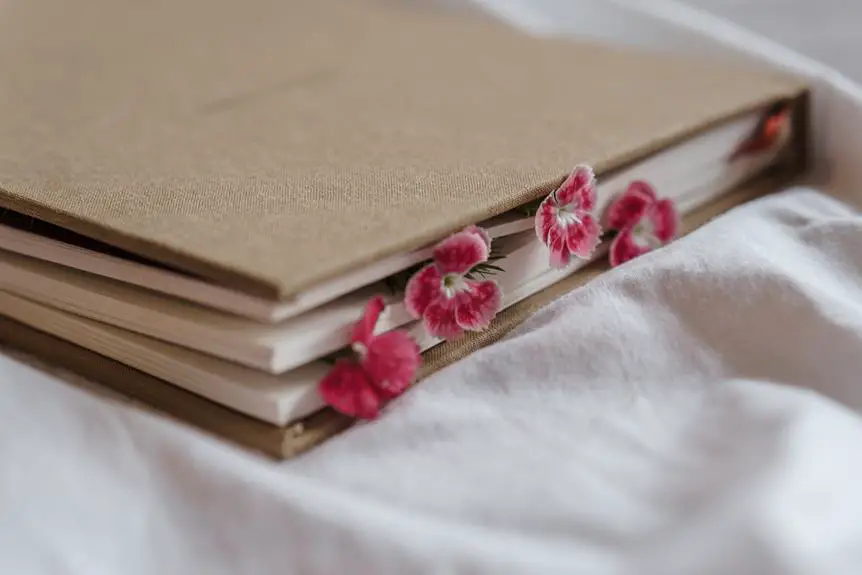Wondering if your beloved scent boosters could be leaving unwanted marks on your fabrics? This concise guide provides a comprehensive exploration of the potential for scent boosters to cause stains on your fabrics.
By understanding the ingredients, fabric types, and influencing factors, you can take proactive measures to prevent and treat any potential stains.
With a focus on caution and effective care, this guide aims to equip you with the knowledge needed to maintain your fabrics' pristine condition while enjoying the delightful scent of your favorite boosters.
So, let's delve into the world of scent boosters and fabric care to ensure your fabrics remain spotless and fresh.
Key Takeaways
- Scent boosters can cause stains if not used correctly.
- Certain fabrics like silk and wool may be more susceptible to staining.
- Ingredients in scent boosters can react with substances in detergents, leading to stains.
- Read product labels to ensure compatibility with specific fabrics.
Understanding Scent Booster Ingredients
If you want to understand whether scent boosters can stain fabrics, it's essential to grasp the ingredients they contain. Scent booster chemicals are the key components that contribute to their effectiveness in providing long-lasting fragrance. These chemicals often include cationic surfactants, dyes, and fragrances.
Cationic surfactants are responsible for neutralizing the electric charge of the fabrics, allowing the fragrance to adhere better. However, some fabric materials may not be compatible with these cationic surfactants, leading to potential staining. Additionally, the dyes used in scent boosters can also pose a risk to certain fabrics, especially lighter-colored ones.
Understanding the fabric compatibility of scent booster chemicals is crucial in preventing any potential staining. Fabrics such as silk, wool, and synthetic materials may be more susceptible to discoloration or staining when exposed to certain ingredients in scent boosters. It's important to carefully read the product labels and instructions to ensure that the scent booster is suitable for the specific fabrics you're treating.
Common Types of Fabric Stains
Fabric stains can be a common nuisance, often caused by spills and everyday wear and tear. Understanding the different types of fabric stains is essential for effectively treating and removing them.
Scent Boosters and Stains
Scent boosters contribute to fabric stains if not used correctly. Certain scent boosters contain dyes and oils that can leave residue on fabrics, leading to stains. These substances may not dissolve completely when overused or improperly diluted, causing discoloration on fabrics. Some scent boosters also contain ingredients that can react with specific substances found in detergents, leading to stains. To prevent this, follow recommended guidelines for scent booster application and fabric care. Use the appropriate amount of scent booster, ensure it's fully dissolved before adding clothes, and avoid direct contact between concentrated scent boosters and fabrics. By practicing proper usage and fabric care, you can minimize the risk of stains caused by scent boosters.
Removing Fabric Stains
To remove common fabric stains, begin by identifying the type of stain and treating it accordingly. Different stains require different treatments, and using the wrong method can actually set the stain rather than remove it. Refer to the table below for specific stain removal techniques and products to use for each type of stain. Always remember to test any product on a small, inconspicuous area of the fabric before applying it to the stain. Additionally, carefully read and follow the instructions on the product label. With the right stain removal techniques and laundry care, you can effectively tackle common fabric stains and keep your clothes looking fresh and clean.
| Type of Stain | Treatment |
|---|---|
| Grease | Dishwashing liquid |
| Blood | Cold water and enzyme detergent |
| Ink | Rubbing alcohol or acetone |
| Wine | White vinegar and warm water |
Factors Influencing Stain Formation
When considering the factors that influence stain formation from scent boosters, it's essential to examine the impact of the ingredients in these products and how they interact with different fabric types.
Understanding the susceptibility of various fabrics to staining is also crucial in determining the potential effects of scent boosters.
Scent Booster Ingredients' Impact
You might notice that scent booster ingredients can impact the formation of stains on your fabrics. The impact of fragrance and fabric compatibility are crucial factors to consider.
Some scent booster ingredients contain dyes or colorants that can leave stains on certain fabrics, especially light-colored or delicate ones. Additionally, the chemical composition of scent boosters can affect how they interact with different fabric types. Ingredients such as surfactants and solvents may not be compatible with all fabrics, leading to potential staining.
Moreover, the concentration of certain ingredients in scent boosters can also contribute to the likelihood of staining. It's important to carefully read the labels and instructions to understand the potential impact of scent booster ingredients on your specific fabrics, and consider conducting a patch test before widespread use to minimize staining risks.
Fabric Type Susceptibility
Fabric type susceptibility to staining by scent boosters can be influenced by various factors, including the composition of the fabric and its compatibility with the ingredients in the boosters. Different fabrics have varying levels of absorbency and reaction to chemicals, affecting their propensity to stain. When considering fabric care and stain prevention, it's essential to understand how different fabric types interact with scent boosters. Below is a table outlining the susceptibility of common fabric types to staining by scent boosters:
| Fabric Type | Susceptibility to Staining |
|---|---|
| Cotton | Low |
| Polyester | Medium |
| Silk | High |
| Wool | Low |
| Rayon | Medium |
Understanding the staining susceptibility of different fabric types is crucial for effective fabric care and stain prevention. By utilizing this knowledge, you can make informed decisions when using scent boosters to maintain the quality of your fabrics.
Precautionary Measures for Scent Booster Use
To prevent staining, use only the recommended amount of scent booster in each load of laundry. Overusing scent boosters can lead to excessive residue, which may result in stains on your fabrics.
Additionally, consider using fabric care alternatives such as fragrance-free detergents or natural laundry boosters to minimize the risk of stains.
When using scent boosters, ensure that they're fully dissolved in water before adding your clothes to the wash. This will help distribute the scent booster evenly and reduce the likelihood of concentrated spots causing stains.
It's also important to avoid direct contact between undiluted scent boosters and fabrics, as this can lead to potential discoloration. If you prefer using scent boosters directly on your clothes, perform a patch test on a small, inconspicuous area to check for any adverse effects before using it on the entire garment.
Treating Stains Caused by Scent Boosters
When dealing with stains caused by scent boosters, it's important to promptly address the affected fabric to prevent the blemish from setting in. To begin with, thoroughly rinse the stained area with cold water to flush out as much of the scent booster residue as possible. Avoid using hot water, as it can set the stain further into the fabric.
Once rinsed, apply a small amount of liquid detergent directly onto the stain and gently rub it in. Allow the detergent to sit on the stain for a few minutes to penetrate and lift the residue. Afterward, launder the fabric as usual, but be sure to check that the stain has been completely removed before drying, as heat can make the stain more difficult to remove.
In the future, consider using scent booster alternatives such as natural essential oils or fragrance-free laundry products to prevent potential staining. These alternatives can provide a pleasant scent without the risk of leaving stains on your fabrics.
Additionally, always follow the manufacturer's instructions and recommended dosages when using any laundry products to minimize the risk of staining.
Alternative Freshening Methods
Consider exploring natural fragrance options as an alternative to scent boosters for freshening your laundry. Natural alternatives offer a safe and effective way to infuse your clothes with a pleasant scent without the risk of staining.
One popular DIY solution is to make your own fabric refresher spray using simple ingredients such as distilled water, witch hazel, and essential oils. By combining these elements, you can create a customized scent that suits your preferences.
Another option is to add a few drops of essential oils directly to wool dryer balls before tossing them in the dryer with your clothes. This method not only imparts a natural fragrance but also helps to reduce static and cut down on drying time.
Additionally, hanging your laundry outside to air dry allows it to soak up the fresh, natural scents of the outdoors, providing a delightful alternative to artificial fragrances.
These natural approaches not only avoid the risk of fabric staining but also contribute to a greener, more eco-friendly laundry routine.
Professional Advice on Fabric Care
You can consult a professional for expert advice on fabric care to ensure the longevity and quality of your garments. Professional advice can be invaluable when it comes to maintaining the condition of your fabrics.
Here are some key aspects to consider:
- Fabric Longevity: Seek advice on the best practices for preserving the longevity of different fabrics. Professionals can guide you on washing, drying, and ironing techniques tailored to specific fabric types, ensuring they remain in top condition for longer periods.
- Scent Booster Effectiveness: Professionals can provide insights into the effectiveness of scent boosters and their impact on different fabrics. They can advise on suitable products that not only add fragrance but also maintain fabric quality.
- Stain Removal Techniques: A professional can recommend effective stain removal techniques without compromising the integrity of the fabric. Whether it's a delicate silk or a sturdy denim, understanding the right approach to stain removal is crucial for fabric care.
- Storage Tips: Consult with a professional on the best ways to store different types of fabrics. Proper storage techniques can prevent damage from pests, moisture, and environmental factors, ultimately extending the life of your garments.
Frequently Asked Questions
Can Scent Boosters Cause Allergic Reactions or Skin Irritation?
Scent booster ingredients can potentially cause allergic reactions and skin irritation. It's essential to be aware of the specific components in these products and to patch test them on a small area of skin first.
Are There Any Specific Fabrics That Are More Prone to Staining From Scent Boosters?
Certain fabrics, like silk or wool, are more prone to staining from scent boosters. Consider using scent boosters specifically designed for delicate fabrics to minimize the risk of staining and ensure fabric compatibility.
Can Scent Boosters Leave Residue on Fabrics That Could Affect Their Appearance or Texture?
To prevent residue on fabrics and ensure fabric compatibility, always follow the manufacturer's guidelines for using scent boosters. Properly measure and add the boosters to the washing machine before adding clothes, and avoid direct contact with fabrics to maintain their appearance and texture.
How Long Does It Take for a Stain Caused by a Scent Booster to Set In?
To prevent stains caused by scent boosters, apply them directly to the drum before adding clothes. Promptly remove any spills or residues to avoid setting the stain. Use stain removal methods appropriate for the fabric to maintain its longevity.
Are There Any Specific Washing Techniques or Products That Can Help Remove Scent Booster Stains From Fabrics?
To remove scent booster stains, try using specific washing techniques and stain removal products. Pre-treat the stained area with a stain remover before washing. Also, consider increasing the water temperature and using a heavy-duty detergent for better stain removal.
- How Does Ring Spun Cotton Affect Garment Fit and Shape Retention? - August 13, 2024
- What Are the Challenges in Producing Ring Spun Cotton? - August 13, 2024
- Is Ring Spun Cotton Suitable for Plus-Size Clothing? - August 13, 2024





